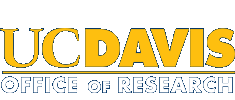Equipment and Controlled Technologies
In order to protect national security interests and foreign policy objectives, the U.S. government controls the export of sensitive equipment, software, and technologies. The export control system consists primarily of two sets of export control regulations: the Export Administration Regulations (EAR) Commerce Control List (CCL) and the International Traffic in Arms Regulations (ITAR) Munitions List.
The University engages in research and academic activities that may be subject to those U.S. export control laws and regulations. While the research being performed at the University is fundamental research, the controlled export of items, software, technologies, and equipment could impact the conduct of University research or teaching. These regulations control what we can share with foreign nationals, either as tangible items for shipping abroad or as information for sharing either in the U.S. or abroad.
Acquisition of Equipment and Items
As part of your research and related activities, you will undoubtedly seek to purchase research equipment and other items to facilitate your projects. As you and/or your staff investigate vendors and suppliers for your items, it is important that be aware of language in their written materials (such as product brochures or purchase orders) that indicates the equipment or item is or may be controlled under export-controlled laws. For instance, if the vendor or supplier (or manufacturer) informs you or you read written product information that indicates the item is “subject to export control laws,” or is controlled under “ITAR” or “EAR” (or other information to this effect), please contact Export Control prior to finalizing the purchase or sending the purchase request to UCD Procurement and Contracts.
Frequently Controlled Technologies
Categories of technologies that typically are subject to export control laws include, but are not limited to:
- Chemical, biotechnology, and biomedical engineering;
- Materials technology;
- Remote sensing, imaging and reconnaissance;
- Navigation, avionics and flight control;
- Robotics;
- Propulsion system and unmanned air vehicle subsystems;
- Telecommunications/networking;
- Nuclear technology;
- Sensors and sensor technology;
- Advanced computer/microelectronic technology;
- Information security/encryption;
- Laser and directed energy systems;
- Rocket systems;
- Marine technology.
If you are engaging in emerging technology and have international engagements, please reach out to Export Control to ensure you remain in compliance with export control regulations and UCOP policy.
Dual Use Research and Dual Use Research of Concern
Dual Use Research of Concern (DURC) is defined as “life sciences research that, based on current understanding, can be reasonably anticipated to provide knowledge, information, products, or technologies that could be directly misapplied to pose a significant threat with broad potential consequences to public health and safety, agricultural crops and other plants, animals, the environment, materiel, or national security.”
Researchers are responsible for assessing if their research is DURC, reporting this assessment to the DURC Institutional Review Entity, and if required, implementing a risk mitigation and management plan.
See EH&S Dual Use Research of Concern for more information, and reach out to EH&S for questions.
Software
Prior to purchasing or receiving software, ask the software provider to identify the ECCN number that controls the software. Research the applicability of control, given the possibility that the software provider is being overly cautious and the software is not, in fact, controlled.
When creating University software, make it “publicly available” whenever possible. If the source code of a software program is publicly available, then the machine readable code compiled from the source code is software that is publicly available and, therefore, not subject to the EAR.
Encryption Software
Encryption software controlled under ECCN 5D002 for Encryption Items (EI) reasons on the Commerce Control List and mass market encryption software with symmetric key length exceeding 64-bits controlled under ECCN 5D002 remain subject to EAR.Encryption software controlled under 5D002 can be exported under license exception TSU (Technology & Software Unrestricted) if it is made publicly available. The source code and corresponding object code resulting from compiling such source code may be posted on the internet where it may be downloaded by anyone, as long as the Department of Commerce is notified of the internet location or is provided a copy of the source code (See EAR, Part 740.13).
Contact Export Control with questions and for assistance.

